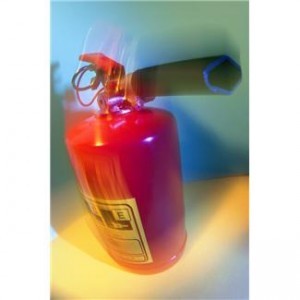 Earlier this week, I got a chance to see an old childhood friend who I haven’t seen in years. As we were catching up on what we’ve been up to lately, he asked me what I do for a living. Usually, when I say that my company does combustible dust remediation my friends who don’t work in an industrial trade just stare at me blankly until I offer an explanation. I then go on to describe what combustible dust is, why it’s different from typical dust, and why it’s not something companies can typically clean (safely) on their own. This time was different.
Earlier this week, I got a chance to see an old childhood friend who I haven’t seen in years. As we were catching up on what we’ve been up to lately, he asked me what I do for a living. Usually, when I say that my company does combustible dust remediation my friends who don’t work in an industrial trade just stare at me blankly until I offer an explanation. I then go on to describe what combustible dust is, why it’s different from typical dust, and why it’s not something companies can typically clean (safely) on their own. This time was different.
As I began to define combustible dust, he started nodding his head, indicating that he knew exactly what I was talking about. He hadn’t learned about dust explosions through a forum, seminar or blog, though. He learned first-hand, when he had a small combustible dust explosion at the plastics company where he used to work. There was a dust leak in one of the machines, and he saw a buildup of dust where the leak had occurred. And so he decided to clean up the dust using compressed air, which made a dust cloud. Though I don’t know the ignition source, something caused it to ignite, creating a dust explosion. Luckily, no one was hurt, and it didn’t cause a secondary explosion.
But the next day, a coworker noticed a buildup of dust, and tried to remove it with compressed air.
A small fire started, and as he started to stomp out the fire, my friend stopped him. “You don’t want to do that.” They extinguished the fire, and afterward, his coworker asked how he knew what was about to happen. His answer:
“Because it happened to me yesterday.”
There are two big issues here. First, workers should be aware any time they are working with combustible materials. Not all workers will seek out information on something that seems harmless (like plastic). But in order to prevent a catastrophe, every employee should be aware of the dangers of combustible dust—and how to properly react to a fire or explosion when it occurs. Neither employee in this case knew the danger until it was too late. The result could have been much worse in both cases.
The second issue is that neither of these fires are documented. Neither employee told their supervisor or made an incident report, making it likely that another employee will have the same experience.
Please educate your workers on the danger of improper combustible dust remediation. If you need a resource, OSHA has a downloadable PDF of the combustible dust poster you should have hanging in your workplace. And, don’t forget to educate any contractors, maintenance personnel or others who enter your facility. You can also request a DVD of the CSB’s video, “Combustible Dust: An Insidious Hazard” through their website.
For more information on having combustible dust remediation performed safely, contact Hughes Environmental at 888-845-3952, or visit www.HughesEnv.com.

